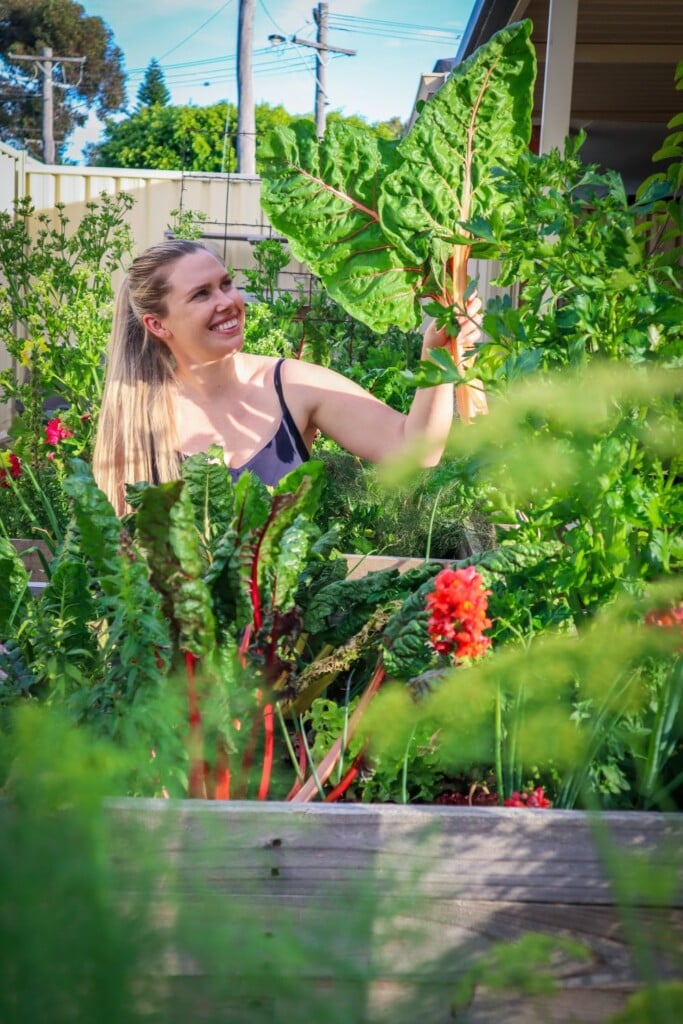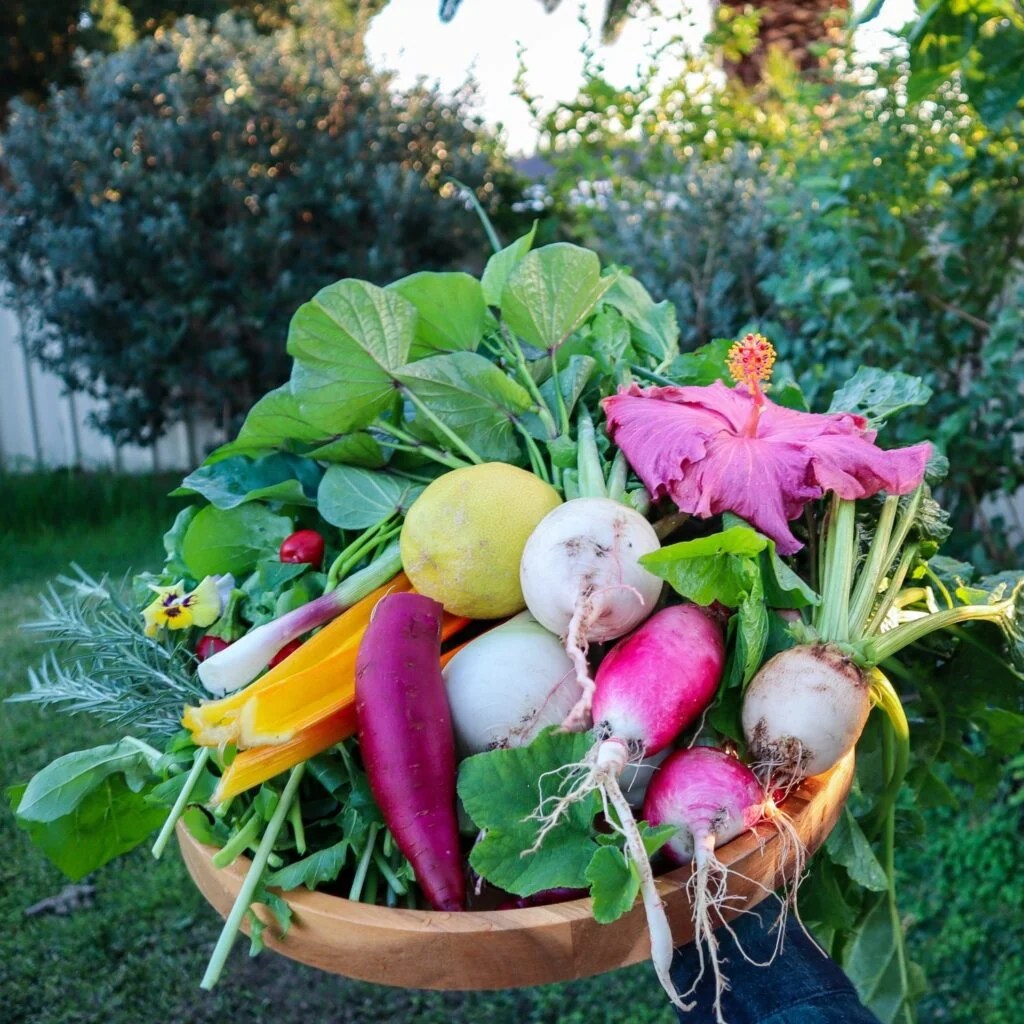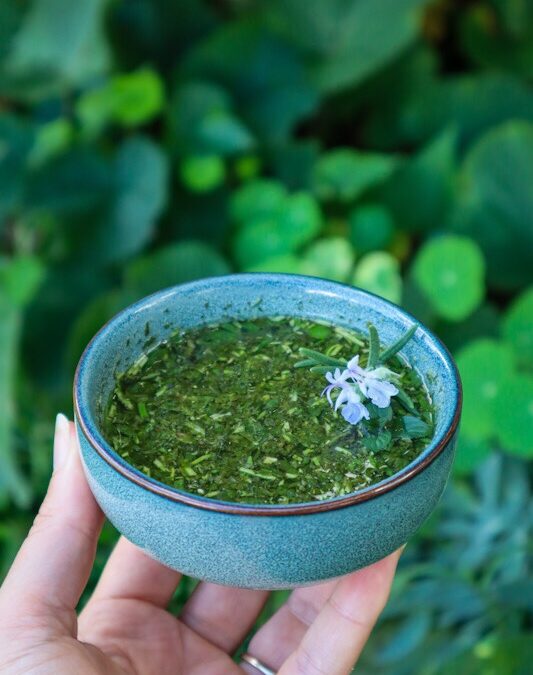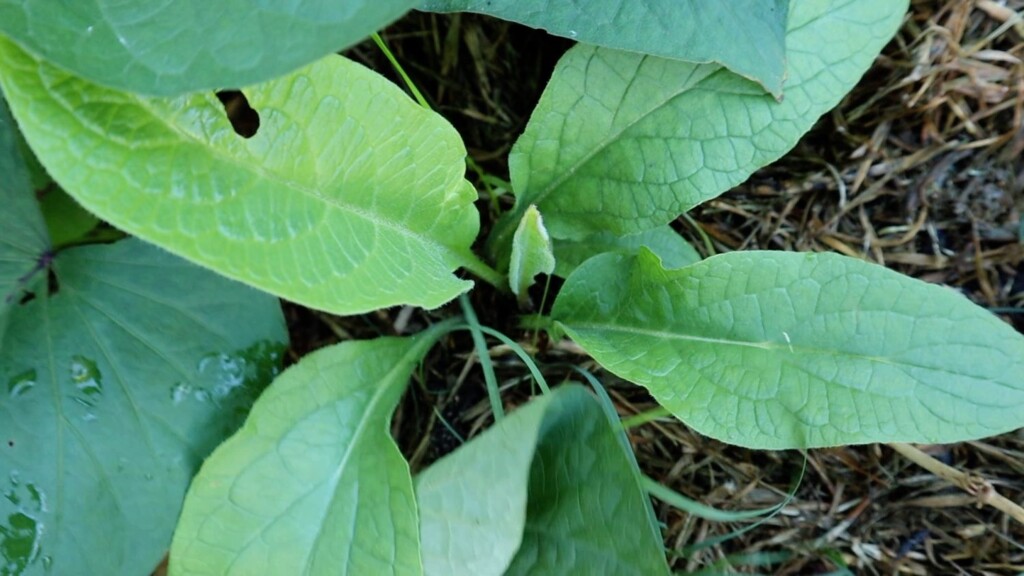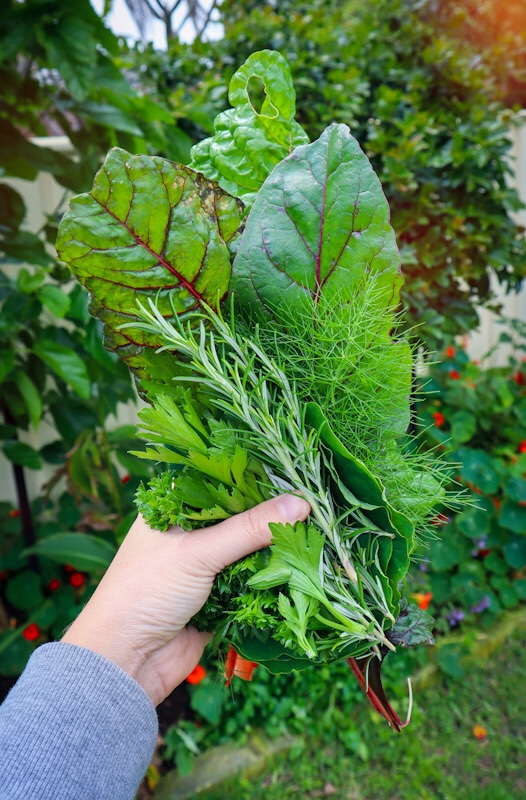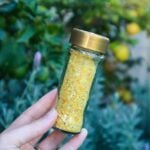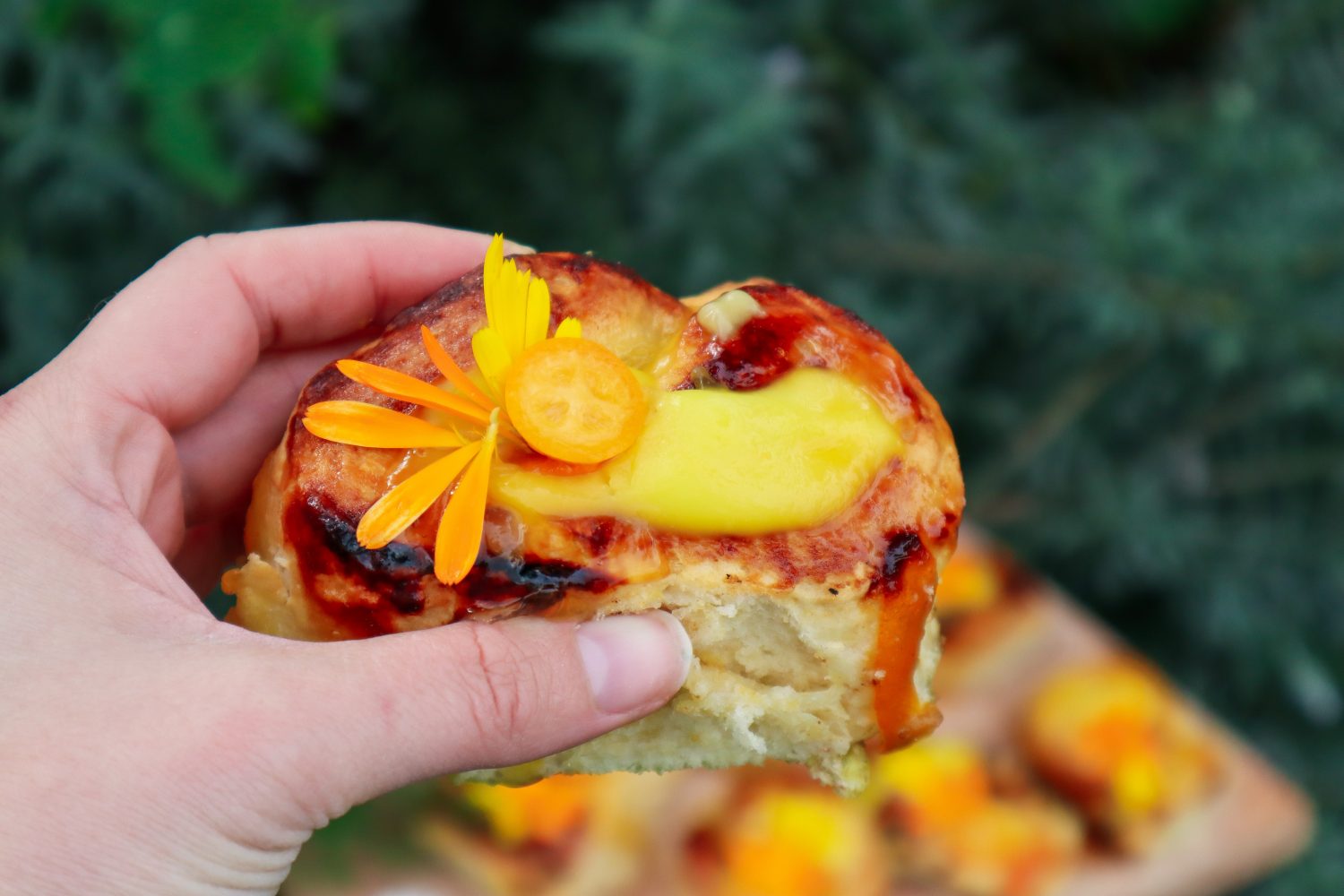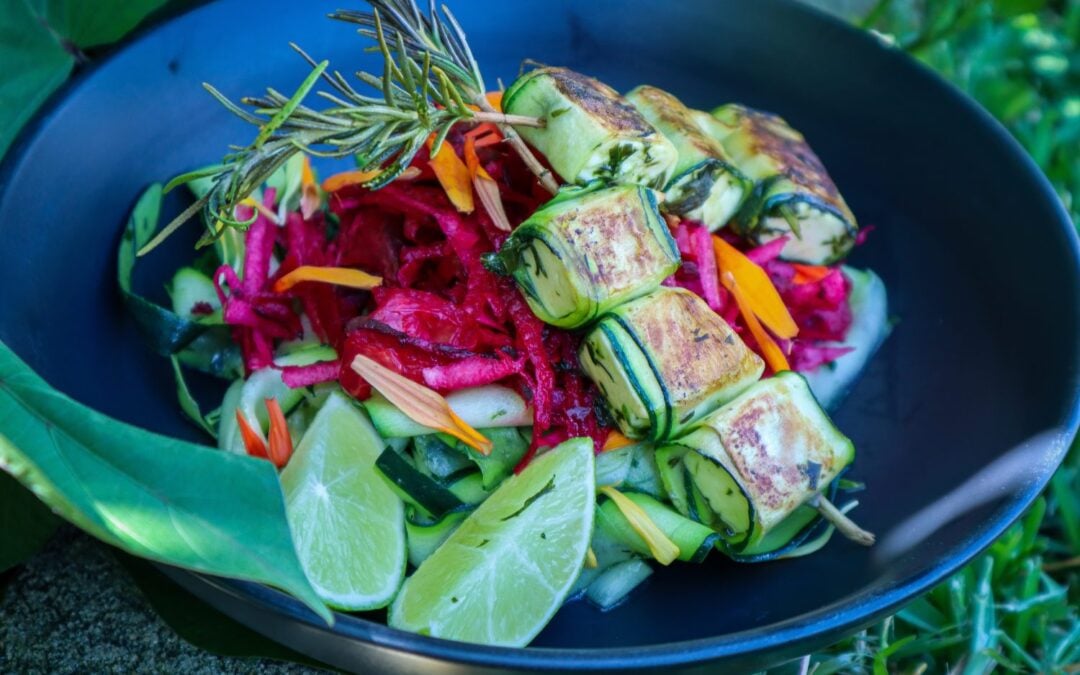
Zucchini Wrapped Haloumi on Rosemary Skewers
These Zucchini wrapped haloumi skewers are so delicious and easy to make! Marinated in my favourite green sauce plus the Rosemary flavour also infuses during cooking. I made this during one of my YouTube live streams and had to share the recipe! Serve on a fresh salad or with a charcuterie board. These would also be great for summer BBQs.
Rosemary (Rosmarinus officinalis) is a fragrant perennial herb. Rosemary is a hardy, drought-tolerant shrub and can also be used as an ornamental due to its evergreen foliage and purple or white edible flowers. Rosemary is a great herb to plant on your journey to sustainability, as it has a large list of beneficial uses for the garden, home, kitchen, plus many medicinal qualities. When Rosemary flowers it will attract an abundance of beneficial pollinators to increase your garden’s production.



Zucchini wrapped Haloumi on Rosemary Skewers
Easy and delicious these Rosemary Skewers make a quick lunch or entertaining dish.
Ingredients
- 1 medium Zuchinni
- 1 packet Haloumi
- Olive oil
- 9 Rosemary sprigs
- Green Dressing (available below for logged in members or see notes)
Instructions
- Soak the Haloumi in a bowl of water for 5-10 mins while prepping the rest of the dish (optional but reduces the salt and makes the halloumi softer).
- Cut the Zucchini into thin ribbons using a wide vegetable peeler.
- Prepare the green sauce or marinade (available below for logged-in members or see notes)
- Pour half the marinade over the zucchini Ribbons.
- Remove the haloumi from the water, cut it into squares roughly 1-2cm, and place in the bowl with the remainder of the marinade.
- Place the ribbons and halloumi in the fridge to marinate further for 10-20min.
- Heat a pan with olive oil on medium heat.
- Lay a zucchini strip out flat and place a haloumi cube at the beginning then roll to wrap the square.
- Strip 3/4 of the leaves from the rosemary skewers (see notes if you are using the leaves for the marinade you will need to do this at the beginning).
- Place 3 wrapped cubes on a skewer and place in the pan. Cook until golden on each side - roughly 3 minutes each side.
- Serve on a fresh salad with lemon or lime wedges and extra green sauce or a creamy yogurt dressing.
Notes
- Non-member's alternative to the green dressing - Strip 3/4 of the leaves from the Rosemary sprigs. Roughly chop and add 1/4 cup of Olive Oil and use that as the marinade.
- Swap Haloumi for Feta or Vegan Cheese
- P.S - I make the members green dressing in the YouTube live.
Green Sauce Chimichurri
This vibrant green dressing is packed full of flavour and is a delicious way to add a fresh zing to your meals.

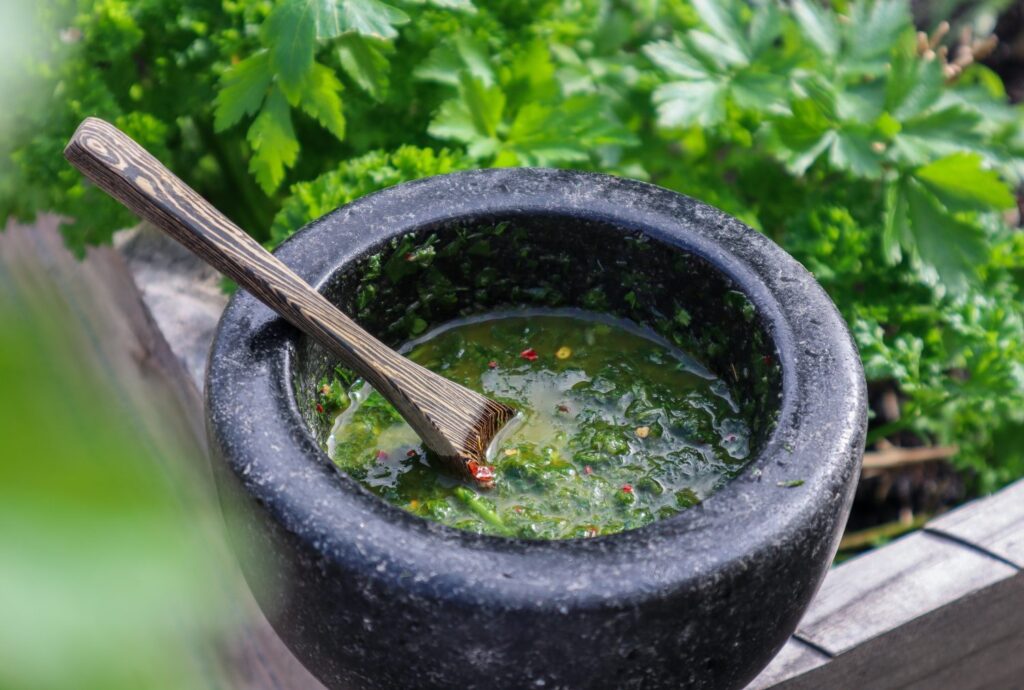
Watch the Live Video 👇
Want more Recipes?
Join the Garden to Plate club to learn more about growing thriving gardens and wholesome Garden to Plate meals.
- Monthly workshops
- Edible plant grow guides
- Seasonal Grow Guides
- Garden-to-plate recipes
- Community to get help when you need it!
